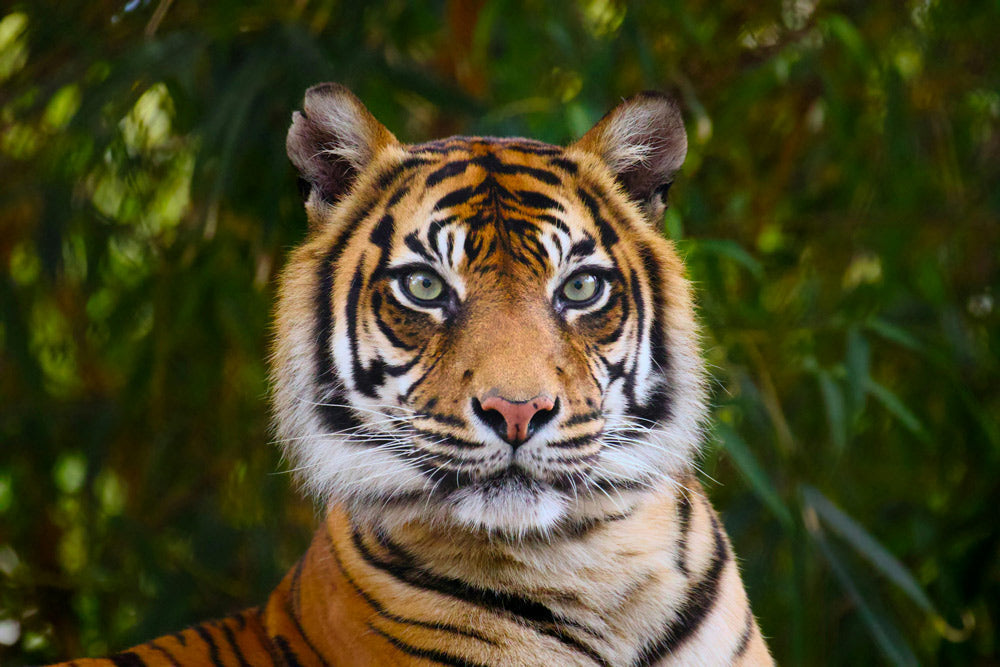Louisiana State University Sparks Outrage with Live Tiger Display at Football Game
Matthew Russell
The sight of a tiger pacing in a cage under the spotlight of Tiger Stadium captures attention, but not without controversy.
For nearly a decade, Louisiana State University (LSU) kept its live mascot, Mike the Tiger, in an on-campus sanctuary rather than parading him on the football field. This decision, made following the death of Mike VI in 2016, was intended to prioritize animal welfare. Yet, Governor Jeff Landry resurrected this display in a recent high-profile game between LSU and Alabama, using a tiger brought in from out-of-state.
The decision, meant to honor LSU tradition, has spurred debate over ethics, animal rights, and Louisiana’s wildlife laws.

LSU paraded a live tiger into a stadium, sparking widespread outrage.
The Return of a Live Tiger on the Field
LSU’s long-standing tradition of showcasing a live tiger at games ended with Mike VI’s passing. The university decided that future mascots would remain in a sanctuary, ending decades of parading a tiger onto the field for pre-game festivities. Yet, Governor Landry felt otherwise, arranging for a Bengal tiger named Omar Bradley to be brought to LSU’s stadium from Florida, The Guardian reports, stirring protest and media attention. The tiger’s presence did not go unnoticed. Amidst cheering fans, Omar was kept on display in a cage for approximately seven minutes before being taken away, a spectacle some found exhilarating and others found disturbing.
Omar is owned by a private individual, Mitchel Kalmanson, who has a record of citations from the U.S. Department of Agriculture for failing to ensure proper care for animals under his supervision, according to WBRZ. For this appearance, Omar was transported from Florida and displayed in an enclosure reportedly used for LSU’s previous tiger mascot. LSU students have expressed mixed feelings about the event, as some see the display as disrespectful to the tiger, while others see it as an homage to the school’s traditions.

Animal rights activists condemned LSU’s live tiger display as exploitative.
Animal Welfare Concerns from Advocacy Groups
Animal rights organizations have reacted strongly to this decision. People for the Ethical Treatment of Animals (PETA) filed a formal complaint with the Louisiana Department of Wildlife and Fisheries (LDWF), arguing that transporting a live tiger across state lines to be used as a prop violated Louisiana’s administrative code, which restricts the importation of exotic animals. PETA emphasized Kalmanson’s documented history of citations and urged LDWF to “pursue all available remedies,” citing animal welfare concerns associated with the display of tigers for entertainment purposes, according to Nola.com.
The LDWF responded by noting that exemptions exist for entities such as LSU that have historically kept a tiger as a mascot, as well as for USDA-licensed traveling exhibitors like Kalmanson. However, animal advocates maintain that such exemptions don’t account for the ethical implications of using a wild animal as entertainment. According to the Associated Press, these activists argue that showcasing a live tiger in such a setting can cause significant stress to the animal, especially under the glaring lights, roaring crowd, and loud music common to football games.

LSU revived the use of live tigers on the field despite ethical concerns.
Officials and Experts Speak Out
State Senator Bill Wheat, a veterinarian and outspoken critic of the live tiger’s use, expressed disappointment with the governor’s decision to involve the tiger at the game.
“For many reasons, I felt strongly this was not a good idea,” Wheat told Advocate. Wheat recalled that he voiced these concerns months prior in a meeting about LSU’s live mascot practices, which had concluded without plans to bring Mike VII out to games. According to Wheat, he was not consulted on the alternative plan to bring in a different tiger.
Despite concerns raised by experts and advocacy groups, Kalmanson defended the conditions under which Omar was displayed. He insisted that the tiger was “not sedated” and “habituated” to loud noises, adding that the animal’s body language suggested it was calm. Critics, however, question how a tiger accustomed to a quieter life could adjust to the chaos of a football stadium within a short period, regardless of Kalmanson’s assurances, WWLTV reports. The tiger was subjected to rehearsals with lights and noise before the game to reduce stress, yet animal advocates argue that this does little to minimize the adverse impact on a wild animal.
Long-Term Implications for Live Animal Mascots
Though some LSU fans celebrated the revival of a live tiger mascot, the incident raises questions about the future of live animal displays in sports. LSU’s choice to keep Mike VII in a sanctuary was once hailed as progress by animal welfare advocates. The return of a live tiger on the field, however, could set a precedent for similar displays at future games. The backlash from activists and lawmakers alike underscores the ethical tension between tradition and animal welfare.
Tigers belong in the wild or in sanctuaries, not in football stadiums. Confinement and transport for such displays contradicts a commitment to the species’ well-being.
For many, LSU’s tradition of live tigers at football games serves as a proud symbol of school spirit. But for others, the use of a tiger on the field represents an outdated and ethically problematic practice. As debates continue, the university faces a choice: continue the spectacle or fully commit to prioritizing animal welfare over tradition.
Click below to take action for Mike VII and other animals forced to perform as mascots.

